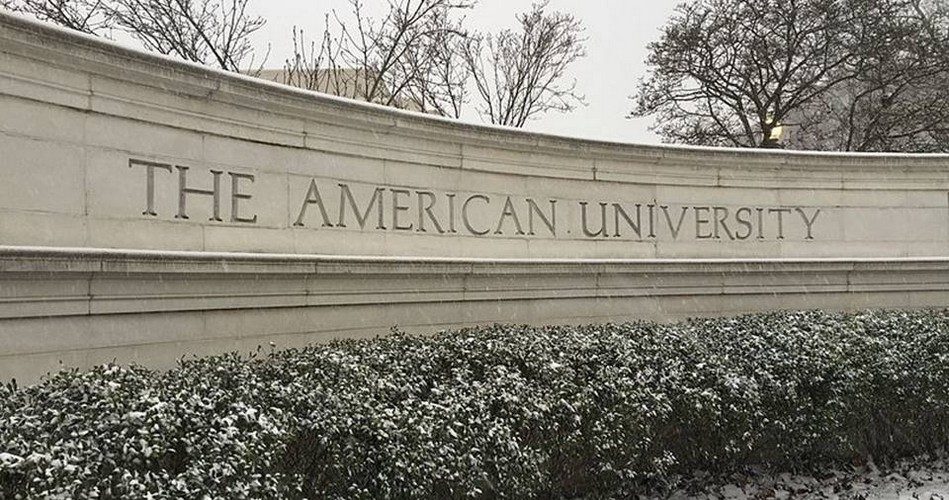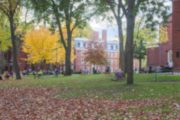
Students and faculty are calling for “minority only” spaces at American University (AU) in Washington, D.C. Supporters of the proposed spaces believe that they will somehow foster diversity on the campus following a year of racial tensions.
Diversity through exclusion: The strategy seems antithetical to itself, but then again, so does much of leftist thought.
An incident first reported in May of 2017, in which bananas with racist messages written on them were found hanging from trees on the campus, triggered the alleged racial tension which is said to exist on the campus.
In response to the incident, American University created the Hub for Organizing Multiculturalism and Equity (HOME), which is meant to be a place where students of any ethnic or racial background “can just come and be,” according to Fanta Ay, the vice-president of campus life and inclusive excellence.
But for many students, HOME is not enough.
“HOME doesn’t provide people with a sense of security, with a sense of belonging, when everyone from all types of affinity groups can be there,” said senior Othniel Malcom Andrew Harris, an organizer of protests at AU.
Currently, students from any ethnicity, race or nationality — even the alleged banana hanger(s) — can request access to HOME by applying online and agreeing to the “mission and goal of continuing to foster a sense of community and belonging for our communities of color and allies,” as stated on the application.
The HOME space was created in response to the alleged incident as well as a survey, which reported that 34 percent of African-American students did not feel welcome on the campus.
However, many students believe that the inclusionary nature of HOME misses the point. “I understand why they would’ve opened it to everyone because exclusivity isn’t something that’s really garnered on campus,” said sophomore Sam Liang of the Asian American Student Union. “But it makes it feel like the point of it isn’t there anymore.”
What should the “point” be? Stay with your own kind?
The original incident that spurred the controversy remains unsolved. The only evidence that it occurred is a grainy surveillance video of a possible suspect and the bananas themselves. Apparently, multiple bananas were found at three locations around the campus.
The banana-hanging was reported as a “hate crime” and referred to the FBI for investigation. The incident occurred the day after Taylor Dumpson was sworn in as AU’s first African-American female president of the student government.
Frankly, the banana hanging incident sounds a little bit fishy, as if it were staged, just like several other incidents in 2017 to show a “surge in hate crimes” following the inauguration of Donald Trump. There are many such examples of racial hoaxes in the past two years:
• At Bowling Green University, a student falsely identified a covering over a piece of lab equipment as an “ACTIVE KKK group” at the university.
• A 14-year-old African-American high-school student in Anne Arundel, Maryland, was disciplined for sending a fake threat of an upcoming attack by the KKK.
• At the University of Southern California, another attempt to link a surge in racism to the election of Trump was discovered when an African-American man was found to have hung a sign which read “No Black People Allowed” on a campus residence hall. The sign featured a makeshift confederate flag and the #MAGA.
• At the Air Force Academy in November of 2017, African-American students discovered several racial slurs, including, “Go Home N***ers,” written on their dormitory doors. The incident prompted Superintendent Lieutenant General Jay Silveria to lecture the students that, “if you can’t treat someone with dignity and respect, then get out.” Ultimately, it was later found that another African-American student was responsible for writing the epithets on the doors.
Nobody knows for certain that the banana-hanging incident is also a hoax. It’s just that the lack of evidence and the absence of suspects leads to such speculation, especially in the current era where surveillance cameras are everywhere.
Certainly, the fear triggered by the incident is not false. And inarguably, racism still exists.
But the proper reaction to such an incident — whether it is real or not — is not to claim victimhood and demand a segregated space for your own identity group. Such a reaction further divides the campus and the nation. True integration begins when we all begin to treat people as individuals rather than members of one identity group or another.
Image: Samschoe / Wikimedia Commons




